In the last Industry Shastra, we discussed the structure and business model of the Indian banking industry. Today, in the 2nd part of the same article, we will talk about its future prospects, along with growth drivers and key concerns.
Recently, the RBI took a few important steps to make the Indian Banking industry more robust and healthy. This includes de-regulation of savings rate, guidelines for new banking licenses and implementation of Basel Norm III. Since March 2002, Bankex (Index tracking the performance of leading banking sector stocks) has grown at a compounded annual rate of about 31%. After a very successful decade, a new era seems to have started for the Indian Banking Industry. According to a Mckinsey report, the Indian banking sector is heading towards being a high-performing sector
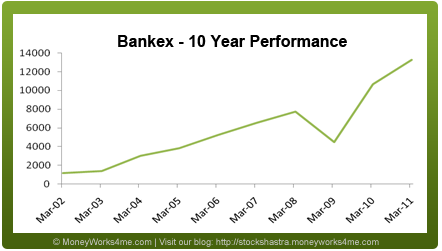
According to an IBA-FICCI-BCG report titled ‘Being five star in productivity – road map for excellence in Indian banking’, India’s gross domestic product (GDP) growth will make the Indian banking industry the third largest in the world by 2025. According to the report, the domestic banking industry is set for an exponential growth in coming years with its assets size poised to touch USD 28,500 billion by the turn of the 2025 from the current asset size of USD 1,350 billion (2010)”. So, before going in its future, let’s have a glance at its historical performance.
What does the past say? Here’s the review of the Indian Banking Industry
If we look at 5 years historical performance of different types of players in the banking industry, public sector bank has grown its deposits, advances and business per employee by the highest rate – 21.7%, 23% and 21.1% respectively. As far as net interest income is concerned, private banks are ahead in the race by reporting 24.2% growth, followed by pubic banks (21.4%) and then by foreign banks (14.8%). Though the growth in the business per employee and profit per employee has been the highest for public sector banks, in absolute terms, foreign banks have the highest business per employee as well as profit per employee.
In the last 5 years, foreign and private sector banks have earned significantly higher return on total assets as compared to their pubic peers. If we look at its trend, foreign banks show an overall decreasing trend, private banks an increasing trend and Public banks have been more or less stagnant. The net NPA of public sector bank was also significantly higher than that of private and foreign banks at the end of FY11, which indicates the asset quality of public banks is comparatively poor. The Capital Adequacy ratio was also very high for private and foreign bank as compared to public banks.
In conclusion, we could say that the current position of ROA, Net NPA and CAR of different kinds of players in the industry indicates that going ahead, public banks will have to face relatively more problems as compared to private and foreign banks.
After looking at industry performance, let’s see how the different players in the Banking Industry have performed in the last five years
The table above indicates that overall the top private banks have grown faster than that of public banks. Axis Bank, one of the new private sector bank, has shown the highest growth in all parameters i.e. net interest income, deposits, advances, total assets and book value. Among public sector banks, Bank of Baroda has been the outperformer in the last five years.
Kotak Mahindra Bank has reported the highest 5-year average net interest margin and currently, it also has the highest CAR whereas HDFC Bank has the highest CASA, the lowest net NPA to net advances ratio and the highest five-year-average ROA. On the other hand, India’s largest bank, SBI reported the lowest five-year-average ROA. Currently, it has the highest net NPA to net advances ratio and the lowest CAR.
Looking at all of the above, it is expected that Private Banks are better placed to garner growth in the Indian Banking Industry.
What are the growth drivers of the Indian Banking Industry
High growth of Indian Economy: The growth of the banking industry is closely linked with the growth of the overall economy. India is one of the fastest growing economies in the world and is set to remain on that path for many years to come. This will be backed by the stellar growth in infrastructure, industry, services and agriculture. This is expected to boost the corporate credit growth in the economy and provide opportunities to banks to lend to fulfil these requirements in the future.
Rising per capita income: The rising per capita income will drive the growth of retail credit. Indians have a conservative outlook towards credit except for housing and other necessities. However, with an increase in disposable income and increased exposure to a range of products, consumers have shown a higher willingness to take credit, particularly, young customers. A study of the customer profiles of different types of banks, reveals that foreign and private banks share of younger customers is over 60% whereas public banks have only 32% customers under the age of 40. Private Banks also have a much higher share of the more profitable mass affluent segment.
New channel – Mobile banking is expected to become the second largest channel for banking after ATMs: New channels used to offer banking services will drive the growth of banking industry exponentially in the future by increasing productivity and acquiring new customers. During the last decade, banking through ATMs and internet has shown a tremendous growth, which is still in the growth phase. After ATMs, mobile banking is expected to give another push to this industry growth in a big way, with the help of new 3G and smart phone technology (mobile usage has grown tremendously over the years). This can be looked at as branchless banking and so will also reduce costs as there is no need for physical infrastructure and human resources. This will help in acquiring new customers, mainly who live in rural areas (though this will take time due to technology and infrastructure issues). The IBA-FICCI-BCG report predicts that mobile banking would become the second largest channel of banking after ATMs.
Financial Inclusion Program: Currently, in India, 41% of the adult population don’t have bank accounts, which indicates a large untapped market for banking players. Under the Financial Inclusion Program, RBI is trying to tap this untapped market and the growth potential in rural markets by volume growth for banks. Financial inclusion is the delivery of banking services at an affordable cost to the vast sections of disadvantaged and low income groups. The RBI has also taken many initiatives such as Financial Literacy Program, promoting effective use of development communication and using Information and Communication Technology (ICT) to spread general banking concepts to people in the under-banked areas. All these initiatives of promoting rural banking are taken with the help of mobile banking, self help groups, microfinance institutions, etc. Financial Inclusion, on the one side, helps corporate in fulfilling their social responsibilities and on the other side it is fueling growth in other industries and so as a whole economy.
Is there anything to be concerned about?
More stringent capital requirements to achieve as per Basel III: Recently, the RBI released draft guidelines for implementing Basel III. As per the proposal, banks will have to augment the minimum core capital after a stringent deduction. The two new requirements – capital conservative buffer(an extra buffer of 2.5% to reduce risk) and a counter cyclical buffer (an extra capital buffer if possible during good times) – have also been introduced for banks. As the name indicates that the capital conservative buffer can be dipped during stressed period to meet the minimum regulatory requirement on core capital. In this scenario, the bank would not be supposed to use its earnings to make discretionary payouts such as dividends, shares buyback, etc. The counter cyclical buffer, achieved through a pro-cyclical build up of the buffer in good times, is expected to protect the banking industry from system-wide risks arising out of excessive aggregate credit growth.
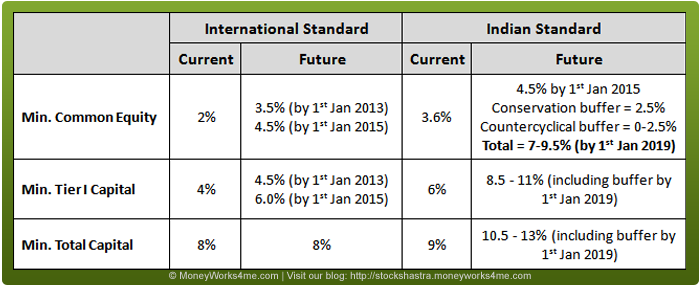
The above table reveals that even under current Basel Norm II, Indian banks follow more stringent capital adequacy requirements than their international counterparts. For Indian Banks, the minimum common equity requirement is 3.6%, minimum tier I capital requirement is 6% and minimum total capital adequacy requirement is 9% as against 2%, 4% and 8% respectively recommended in the Basel II Norm. Due to this the capital adequacy position of Indian banks is at comfortable level. So, going ahead, they should not face much problem in meeting the new norms requirements. But as we saw earlier, private sector banks and foreign banks have considerable high capital adequacy ratio, hence are not expected to face any problem. But, public sector banks are lagging behind. So, the Government will have to infuse capital in public banks to meet Basel III requirements. With the higher minimum core Tier I capital requirement of 7-9.5% and overall Tier I capital of 8.5-11%, Banks ROE is expected to come down.
Increasing non-performing and restructured assets: Due to a slowdown in economic activity in past couple of years and aggressive lending by banks many loans have turned non-performing. Restructuring of assets means loans whose duration has been increased or the interest rate has been decreased. This happens due to inability of the loan taking company/individual to pay off the debt. Both of these have impacted the profitability of banks as they are required to have a higher provisioning amount which directly eats into the profitability. The key challenge going forward for banks is to increase loans and effectively manage NPAs while maintaining profitability.
Intensifying competition: Due to homogenous kind of services offered by banks, large number of players in the banking industry and other players such as NBFCs, competition is already high. Recently, the RBI released the new Banking License Guidelines for NBFCs. So, the number of players in the Indian banking industry is going to increase in the coming years. This will intensify the competition in the industry, which will decrease the market share of existing banks.
Managing Human Resources and Development: Banks have to incur a substantial employee training cost as the attrition rate is very high. Hence, banks find it difficult manage the human resources and development initiatives.
What is the Future Outlook for this Industry?
Currently, there are many challenges before Indian Banks such as improving capital adequacy requirement, managing non-performing assets, enhancing branch sales & services, improving organisation design; using innovative technology through new channels and working on lean operations. Apart from this, frequent changes in policy rates to maintain economic stability, various regulatory requirements, etc. are additional key concerns. Despite these concerns, we expect that the Indian banking industry will grow through leaps and bounds looking at the huge growth potential of Indian economy. High population base of India, mobile banking – offering banking operations through mobile phones, financial inclusion, rising disposable income, etc. will drive the growth Indian banking industry in the long-term. The Indian economy will require additional banks and expansion of existing banks to meet its credit needs.
Given below is the MoneyWorks4me assessment for few banks: At MoneyWorks4me we have assigned colour codes to the 10 YEAR X-RAY and Future Prospects of the companies, as Green (Very Good), Orange (‘Somewhat Good’) and Red (Not Good).
*The 10 YEAR X-RAY facilitates analysis of the financial performance of the bank considering the seven most important parameters. A 10 Year period will normally encompass an entire business cycle. Analyzing the performance over this time frame is essential to understand how a company has fared during the good as well as bad times. The seven most important parameters that one needs to look at are Net Interest Income Growth Rate, Total Income Growth Rate, EPS Growth Rate, Book Value per Share (BVPS) Growth Rate, Return on Assets (ROA), Net NPA to Net Advances Ratio and Capital Adequacy Ratio.
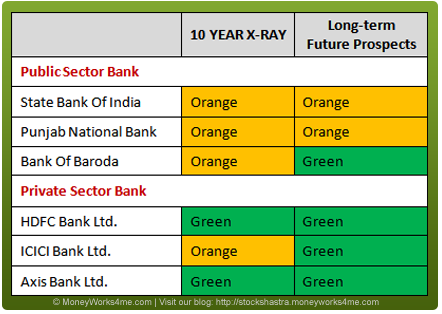
While investing, one must always invest in the stocks of a company that operates in an industry with bright long-term prospects. Further, the company’s 10 YEAR X-RAY and future prospects should also be Green. The table given above gives you a list of few companies from the Banking Industry that you could consider investing in. But, you need to invest in these stocks at the right price (i.e. when the market offers an attractive discount). To find out the right price to invest in these companies, become a member of MoneyWorks4me.com.
Disclaimer:This publication has been prepared solely for information purpose and does not constitute a solicitation to any person to buy or sell a security. It does not constitute a personal recommendation or take into account the particular investment objectives, financial situations or needs of an individual client or a corporate/s or any entity/ies. The person should use his/her own judgment while taking investment decisions
If you liked what you read and would like to put it in to practice Register at MoneyWorks4me.com. You will get amazing FREE features that will enable you to invest in Stocks and Mutual Funds the right way.
Need help on Investing? And more….Puchho Befikar
Kyunki yeh paise ka mamala hai
Start Chat | Request a Callback | Call 020 6725 8333 | WhatsApp 8055769463


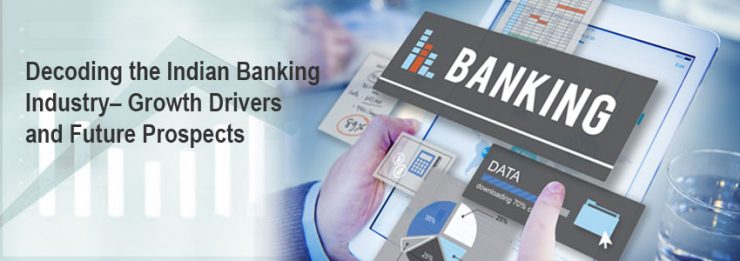
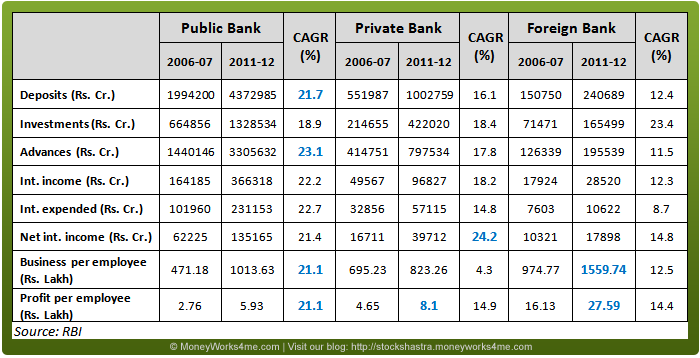
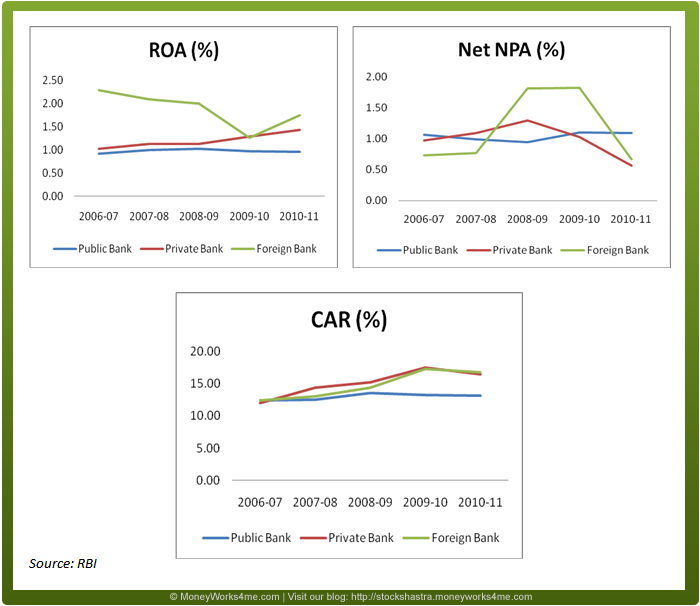
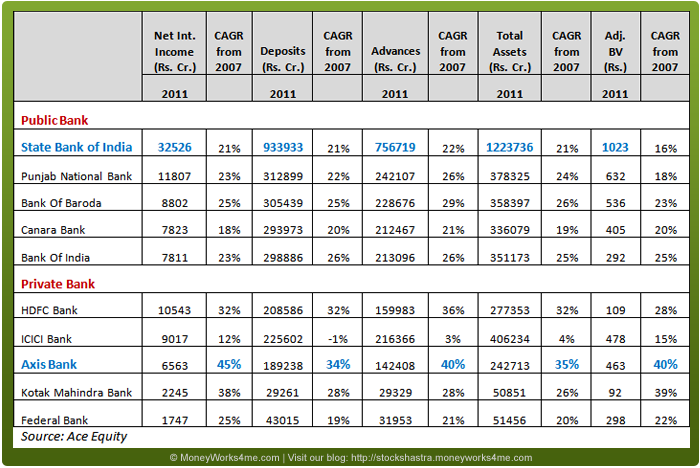
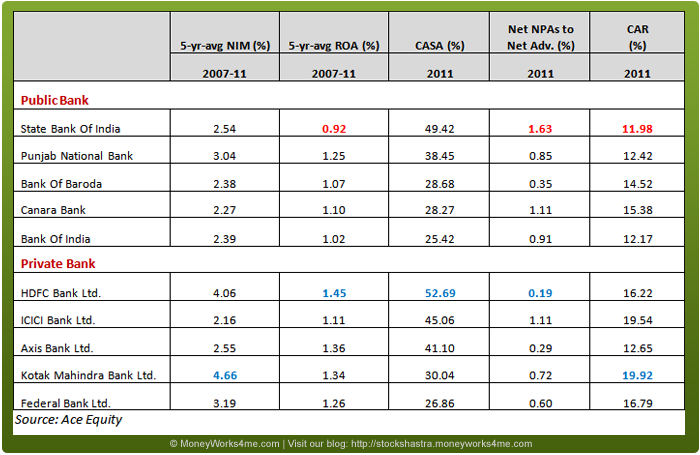
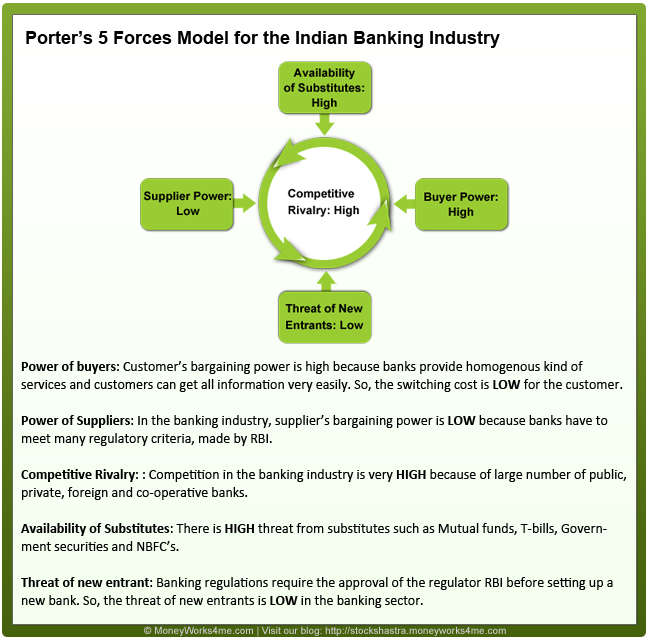


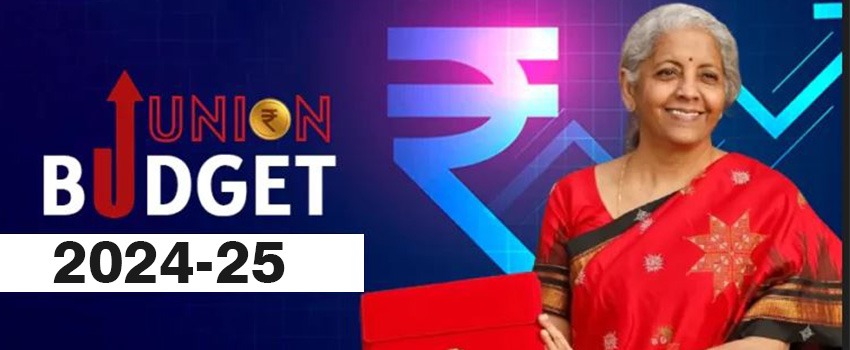
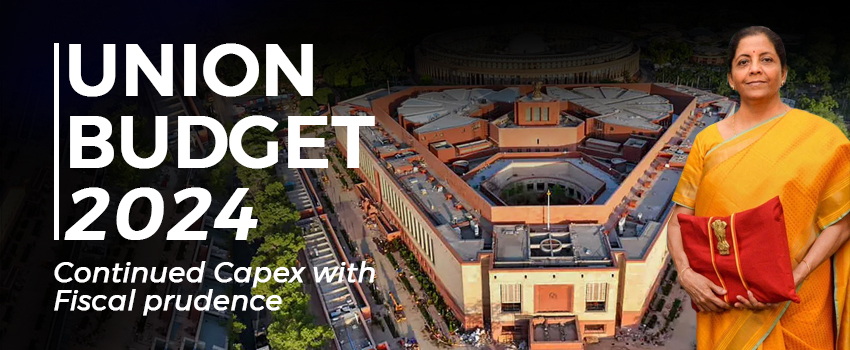

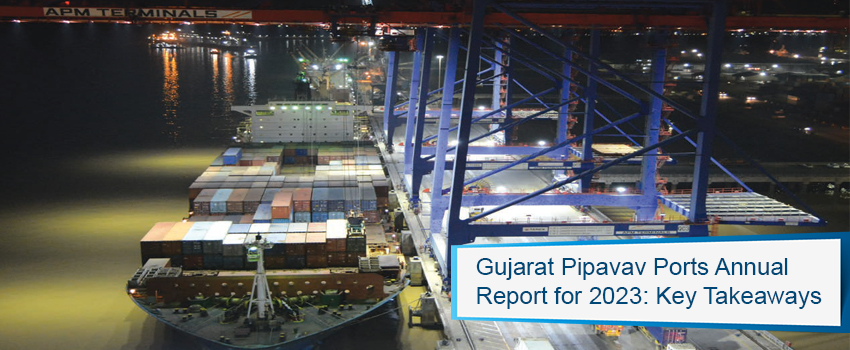

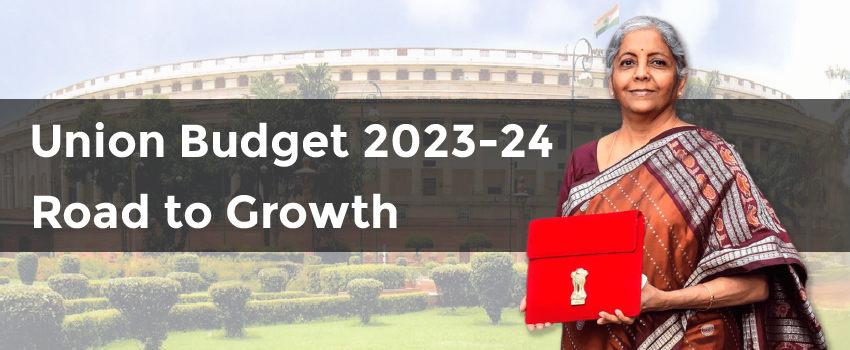
I really like the depth of the analysis
what is buffer mentioned in the norms table above
@e84b340184998b6226ceee01155ddd8f:disqus According to Basel
III, banks
will have to hold 4.5% of common equity and 6% of Tier I capital
of
risk-weighted assets. Besides, they will have to keep some
additional capital
buffer: a mandatory
capital conservation
buffer and a
discretionary
countercyclical capital buffer.
Capital conservation buffer
would be in the
form of common equity of 2.5% of risk-weighted assets which the
bank will
build during normal times to avoid breaches of minimum capital
requirement. Capital
conservation buffer can be reduced if there are losses during a
period of
stress to maintain minimum capital adequacy ratio.
The
countercyclical buffer would
be in the range of 0-2.5% of common equity to protect banks from
periods of
excessive credit growth. The countercyclical capital buffer has
been introduced
as an extension of the capital conservation buffer range.
According to Basel III, banks will have to hold 4.5% of common equity and 6% of Tier I capital of risk-weighted assets. Besides, they will have to keep some additional capital buffer: a mandatory capital conservation buffer and a discretionary countercyclical capital buffer. Capital conservation buffer would be in the form of common equity of 2.5% of risk-weighted assets, which the bank would have to build during normal times to avoid breaches of minimum capital requirement. Capital conservation buffer can be reduced if there are losses during a period of stress to maintain minimum capital adequacy ratio. The countercyclical buffer would be in the range of 0-2.5% of common equity to protect banks from periods of excessive credit growth. The countercyclical capital buffer has been introduced as an extension of the capital conservation buffer range.
According to Basel III, banks will have to hold 4.5% of common equity and 6% of Tier I capital of risk-weighted assets. Besides, they will have to keep some additional capital buffer: a mandatory capital conservation buffer and a discretionary countercyclical capital buffer. Capital conservation buffer would be in the form of common equity of 2.5% of risk-weighted assets, which the bank would have to build during normal times to avoid breaches of minimum capital requirement. Capital conservation buffer can be reduced if there are losses during a period of stress to maintain minimum capital adequacy ratio. The countercyclical buffer would be in the range of 0-2.5% of common equity to protect banks from periods of excessive credit growth. The countercyclical capital buffer has been introduced as an extension of the capital conservation buffer range.
Thanks
A good analysis of different kind of players in Indian Banking Industry. Your assessment for some banks regarding their future prospect is relevant and very useful. Overall, a very informative article.
As expected, a very good article.
An useful article for a banker like me.
Excellent…
A lucid article on a complicated industry….
An informative article, really good one
the analysis was very interesting and has lot of depth. However the break up N PA sector wise will give u the exact position as to which sector requires more attention and why ?
@e84b340184998b6226ceee01155ddd8f:disqus @1074421d7a7f9d3f2697c41746cef517:disqus @29a1e44bb2f761d1e83045d138c1ba89:disqus @cd9679fcf809e184a3e21a6a0d739776:disqus @680cb6dc6abe664b8baf4eb975e853fa:disqus @9f6f283852d8d0f32106372d3ae5ab91:disqus @e97f3b742a35c80b0ee7ffb7fe377946:disqus @77a302146d73fa4248c96cdb8e03e2a3:disqus
….. Thank you all for your appreciation! Do keep reading and posting your feedback.
@e84b340184998b6226ceee01155ddd8f:disqus @e97f3b742a35c80b0ee7ffb7fe377946:disqus @29a1e44bb2f761d1e83045d138c1ba89:disqus @cd9679fcf809e184a3e21a6a0d739776:disqus @9f6f283852d8d0f32106372d3ae5ab91:disqus @680cb6dc6abe664b8baf4eb975e853fa:disqus @1074421d7a7f9d3f2697c41746cef517:disqus@77a302146d73fa4248c96cdb8e03e2a3:disqus .. Thank you all for your appreciation!! Do keep reading and posting your feedback.
really depth analysis
A very useful article. . Saved a lot of time. . Thanks a ton. .
This article is very informative and helpful thanks 🙂
Very informative and useful article. Also, could you keep updating the article as and when new developments happen in the industry like 9 PSBs have decided to outsource their atm services to private service providers like Tata…or about the rules layed out by RBI last quarter or so for setting up a new bank
a really nice post covering all aspects of the industry
Its Best Article….
Really good one. thanks
this one is really help full if u update it
Please give me updated info.
Nice Article. I liked the future outlook section. Thanks.
Really technical and logistic analytical, really a very good informative from the editor/master of this blog